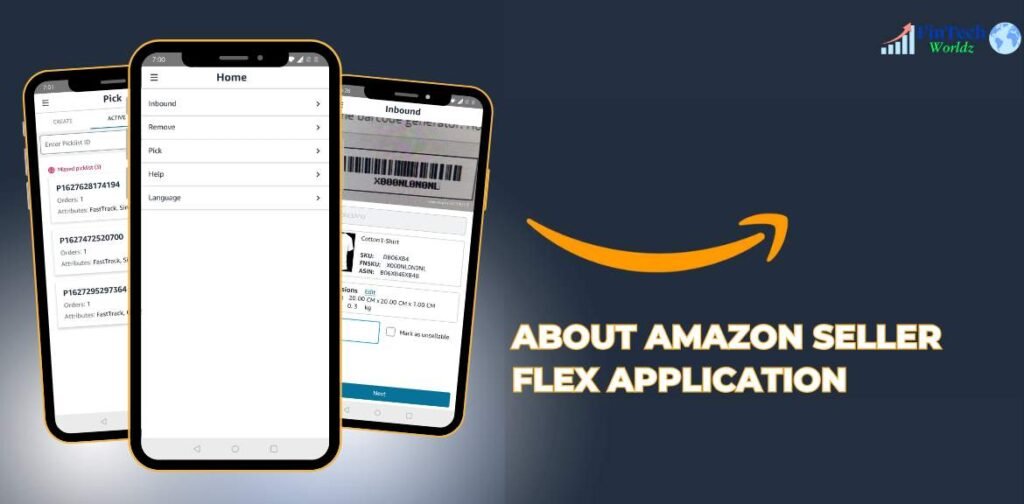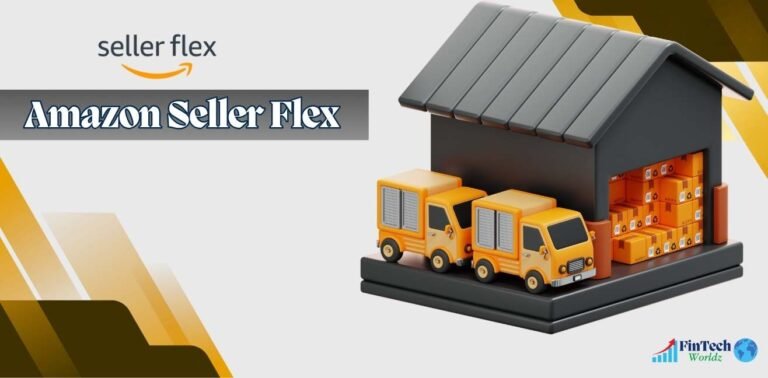In the fast-paced world of E-commerce, Amazon launched new models to help sellers scale better. The Amazon Seller is aspiring for fast deliveries, better control over the functions, and lower logistics prices. To help and guide sellers to achieve this balance, Amazon launched a program called Amazon Seller Flex. It is an innovative program that fills the gap between Amazon FBA and Self-fulfillment. In this blog, we will guide you through what Amazon Seller Flex is, Eligibility requirements, Login process, features, benefits, advantages & disadvantages, and much more.
What is the Seller Flex Amazon Program?

The Amazon Seller Flex is a preferred fulfillment approach that permits sellers to maintain control of inventory, also gaining benefits from its widespread distribution capabilities. The Amazon Seller Flex is launched in 2015 in India and later reached to various countries such as US, Brazil and Germany. This program specialises in strategic distribution, managing shipments, and managing the Account support. The creativity service encourages dealers to maintain their business function and warehouses; on the other hand, they enjoy the pros of the FBA program. The seller flex amazon requires the following details:
- Amazon Marketplace invitation
- Investigate dealer management, packing, shipping, and warehousing.
- A vendor is needed to conduct business in specific locations.
Eligibility Requirements for Applying to Seller Flex Amazon
The sellerflex amazon program is made for small and medium-sized stores with brands put on sale in different locations. The seller flex chooses who can join Flex based on the following eligibility criteria:
- Monthly Sales volume up $0.6 million.
- Amazon Seller rating is 90% higher.
- Managing 1000 units monthly.
- Geographical location in a particular area.
Sellers and Warehouse Owners: Requirements for joining Amazon Flex
Some things are important for the Sellers and Warehouse owners, such as business plan, hardware requirements, as well as Property & packing requirements. Given below are the details:
Business Plan
The sellers should have a strong plan as they understand the opportunity. It shows that they make a profit from the sellerflex amazon.
Hardware Requirements
Given below are the requirements of hardware that you need if you are using Amazon Seller Flex such as barcode scanners, UPS internet connection and such more:
- Two computers running Windows 7 OS with 2 GB of RAM.
- Two barcode scanners.
- A UPS and an Inverter are needed for the backup.
- Stable internet connections of at least two.
- Three printers are needed for shipping labels, gift printing, and for PDF invoice files.
- Prime packing supplies.
Property & Packing Requirements
The Property and packaging are the crucial requirements that you should get to know about:
- Six workers to emphasize on warehouse.
- Product label for simple organization.
- Special place for packing orders.
- Park vehicles near the loading areas.
About Amazon Seller Flex Application

The Amazon Seller Flex App was downloaded from the Google Play Store. Till now, the application has more than one lakh downloads and is rated three plus. In the application, you can perform such following functions, such as accepting inventory, removing inventory, generating picklists, and accessing details of picklists. The application enables warehouse functions through the mobile app.
Amazon Seller Flex login process
Given below are the easy and simple steps that you need to know about seller flex login:
- Register the Business: First, you should have a valid business registration in India.
- Generate Amazon Seller Account: Go to the Amazon Seller Central and sign up through business details and information.
- KYC Verification: Submit the important documents for the verification of identity and business details.
- List the Products: Start listing the products to launch your existence or identity on the platform.
- Develop Performance Metrics: Focus on balancing high seller ratings and consistent volumes of sales.
Features of Amazon Seller Flex
Given below are the best features of Amazon Seller Flex that make it unique from others:
- It offers inventory placement service for quick delivery and strategic distribution.
- seller flex dashboard for order, inventory, and managing shipments.
- Effective bundling of various products into one unit.
- Personalised packaging alternatives for branding and unboxing.
- Adaptable inventory management in Amazon’s fulfillment centres.
- Consolidation with a third-party Logistics service provider.
- Managing the Account support from Amazon.
- Shipping and Handling Discounts as per performance.
- Improved reporting and analytics tool.
Amazon FBA vs. Amazon Seller Flex
| Aspect | Amazon FBA | Amazon Seller Flex |
| Inventory handling | You send inventory to Amazon’s fulfillment centers | You hold inventory in your warehouse |
| Packing & labeling | Amazon handles packing, labeling, and order picking | Seller handles packing, labeling, and picking |
| Delivery & transport | Amazon handles end-to-end logistics | Amazon picks up from your warehouse and handles delivery |
| Prime | Items are Prime eligible by default | Items may carry a Prime & FBA badge if approved |
| Storage & fees | You pay storage, long-term storage, and removal fees | You avoid many FC storage costs and removal fees |
| Control & flexibility | Less direct control | More control over each process step |
| Suitability for bulky items | Costly for large, heavy, or slow-moving SKUs | More efficient and cost-effective for such items |
| Risk & operational burden | Amazon shoulders much of the fulfillment risk | You assume more responsibility (but gain control) |
| Setup complexity | Lower for the seller | Higher setup burden |
| Performance dependence | Amazon’s processes dominate | Your warehouse performance is critical |
Pros and Cons of Flex Seller Amazon
| Pros | Cons |
| Greater control over operations- Sellers manage their own inventory, packing, and quality, offering more flexibility and transparency. | High operational responsibility-Sellers must maintain strict warehouse standards and Amazon-approved processes. |
| Cost savings- Avoids Amazon’s long-term storage, removal, and inbound shipping fees to fulfillment centers. | Significant setup cost- Requires investment in warehouse infrastructure, staff, systems, and equipment. |
| Prime badge eligibility- Products remain eligible for Amazon Prime, improving visibility and customer trust. | Invite-only program- Not open to all sellers; participation depends on Amazon’s approval. |
| Faster local fulfillment- Orders are picked up directly from your warehouse, leading to shorter delivery times. | Limited to specific regions- Available only in areas supported by Amazon’s transport network. |
| Reduced inventory damage- Since sellers handle their own storage, chances of loss or mishandling at Amazon’s FCs are minimized. | Strict performance monitoring- Amazon tracks metrics like on-time dispatch and defect rate continuously. |
| Suitable for bulky or slow-moving goods- More economical for items that incur high FBA storage fees. | Not ideal for small sellers- Sellers with low volumes may not benefit due to operational overhead. |
| Better flexibility and scalability- Easier to adjust inventory and operations based on demand. | Risk of non-compliance penalties- Failure to meet Amazon’s standards can lead to suspension from Seller Flex. |
| Seamless integration with Amazon logistics- Amazon handles transportation, so sellers still benefit from reliable delivery. | Dependency on Amazon’s pickup schedule- Sellers must align operations with Amazon’s pickup timings. |
Conclusion
Amazon Deller Flex is changing the way sellers balance their inventory, packaging, and delivery within Amazon. By merging the adaptability of self-management of warehousing with the effectiveness of Amazon’s logistics. The Seller Flex supports amazing control, an easy sellerflex login process, quick delivery, and enhanced customer satisfaction.
Read More-

